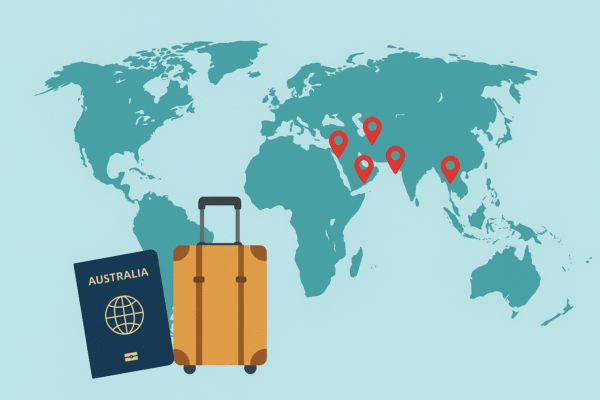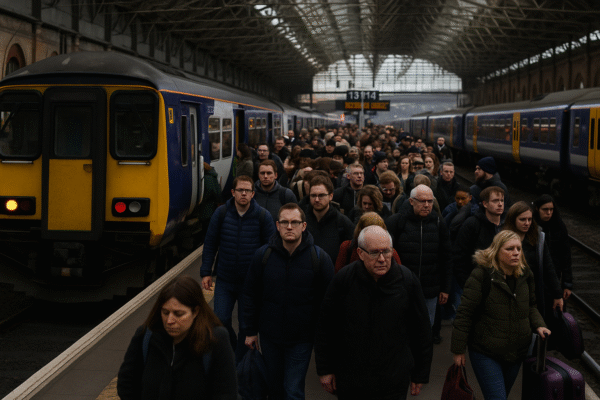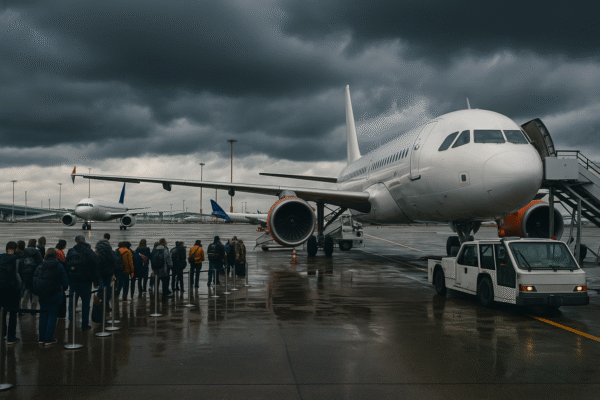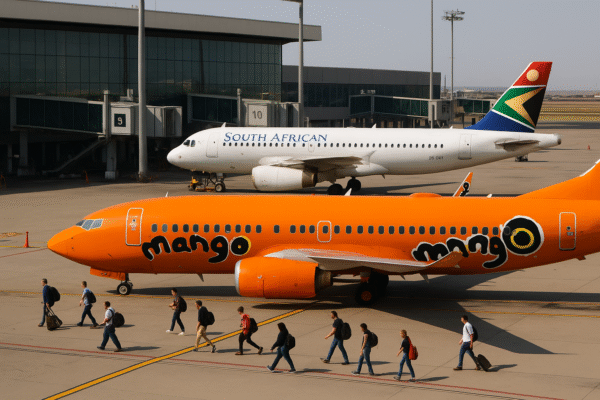Global air travel has entered another turbulent chapter, with airports in the United States, Europe, and Asia reporting widespread delays that have disrupted thousands of journeys. According to updated data from FlightAware, delays at major hubs such as Dallas-Fort Worth, JFK, Philadelphia, and Teterboro have coincided with severe bottlenecks in Nice, Barcelona, Geneva, Shenzhen, and Chengdu.
For passengers, the results have been long waits, missed connections, and mounting frustration. For tourism industries across continents, the impact is even greater—hotels, tour operators, and destinations dependent on timely arrivals are now grappling with delays that ripple far beyond the runway.
U.S. Airports Struggle With Severe Disruptions
In the United States, several high-traffic airports recorded significant setbacks.
- Dallas-Fort Worth International Airport reported inbound delays averaging nearly 90 minutes, while outbound flights were held back more than two hours.
- Dallas Love Field saw inbound flights grounded until midday due to thunderstorms, causing departure delays of nearly two hours.
- John F. Kennedy International Airport (New York) reported average inbound delays close to two hours, primarily caused by high winds.
- Philadelphia International and Teterboro (New Jersey) faced shorter but notable delays, averaging 20–30 minutes.
Together, these disruptions impacted more than 1,900 flights across the United States in a single day, underscoring the fragility of aviation schedules when weather and congestion collide.
European Airports Under Pressure
In Europe, airports from France to Spain and Switzerland reported delays.
- Nice Côte d’Azur Airport was among the hardest hit, with both arrivals and departures delayed by over one hour.
- Barcelona-El Prat Airport recorded average departure delays of 46 minutes, while Geneva Airport in Switzerland saw airborne arrival delays nearing 40 minutes.
- Manchester Airport in the UK reported delays of around 29 minutes, contributing to wider disruptions in northern Europe.
- Paris Charles de Gaulle and Lyon also logged delays of 27–31 minutes.
These airports are vital gateways for international tourists. When hubs like Barcelona and Geneva stall, connections to Mediterranean beaches, Alpine resorts, and European business centers face significant setbacks.
Asia Faces Heavy Traffic and Weather Delays
In Asia, congestion combined with summer weather created some of the most severe global delays.
- Shenzhen Bao’an International Airport reported average delays of one hour and 25 minutes for departures.
- Chengdu Shuangliu International Airport registered departure delays averaging one hour and 36 minutes.
- Guangzhou Baiyun International and Xi’an Xianyang also experienced delays of 35–60 minutes.
- Kunming Changshui International reported extended waiting times, compounding challenges for both domestic and international travelers.
With China’s aviation sector handling some of the highest passenger volumes in the world, these disruptions ripple across global tourism, complicating connections for long-haul flights.
The Domino Effect of Global Delays
Airports function as lifelines for both tourism and business. When multiple hubs experience congestion simultaneously, delays cascade across continents. A thunderstorm in Dallas or strong winds in New York do not stay confined to U.S. skies—they affect connections in Europe, Asia, and beyond.
FlightAware’s latest data confirms that weather remains a dominant cause of disruption. However, infrastructure limits, traffic surges, and air traffic control challenges amplify the problem. Even modest delays at airports like Manchester or Geneva create ripple effects across interconnected flight schedules.
Impact on Tourism and Business Travel
Tourism is one of the sectors most vulnerable to aviation disruption. Every delayed flight translates into missed hotel check-ins, rescheduled tours, and logistical headaches for transport providers. In destinations like the Mediterranean, New York, Dallas, Shenzhen, and Paris, where tourism drives local economies, delays directly cut into revenue and undermine visitor satisfaction.
For business travelers, reliability is just as critical. Meetings missed due to two-hour flight delays can derail international deals, while stranded executives face mounting costs. The uncertainty around flight reliability risks eroding passenger confidence at a time when global travel demand is rebounding.
Airlines and Airports Responding
Airlines are attempting to counter growing disruption by investing in forecasting technology, digital passenger communication, and contingency planning. Many now offer mobile updates, automatic rebooking, and even hotel partnerships to assist stranded travelers.
However, long-term solutions demand more than stop-gap measures. Airports must modernize infrastructure, expand capacity, and improve coordination across global air traffic control systems. Climate resilience is also critical as storms and extreme weather become more frequent.
Preparing Travelers for Uncertainty
For travelers, adapting to the new reality of global delays is essential. Experts recommend:
- Booking direct flights wherever possible.
- Allowing longer connection windows between flights.
- Purchasing flexible tickets and insurance to cover unexpected delays.
- Staying updated through airline apps and alerts.
Tourism boards, airlines, and governments must also work together to restore confidence by prioritizing resilience and reliability alongside competitive pricing.
A Tourism Industry at Risk
The August 2025 data serves as a warning: global aviation remains fragile. With nearly 2,000 delays in one day in the U.S. alone, and heavy disruptions in Europe and Asia, tourism markets face real risks. Destinations from Barcelona to Shenzhen, Dallas to Geneva are discovering that unreliable air connectivity undermines growth.
For the tourism industry, the challenge is immediate. Unless resilience becomes a central part of aviation planning, delays will continue to weaken the global travel economy. The latest wave of disruption is not just an inconvenience—it is a crossroads moment for the future of air travel reliability.
For more travel news like this, keep reading Global Travel Wire















